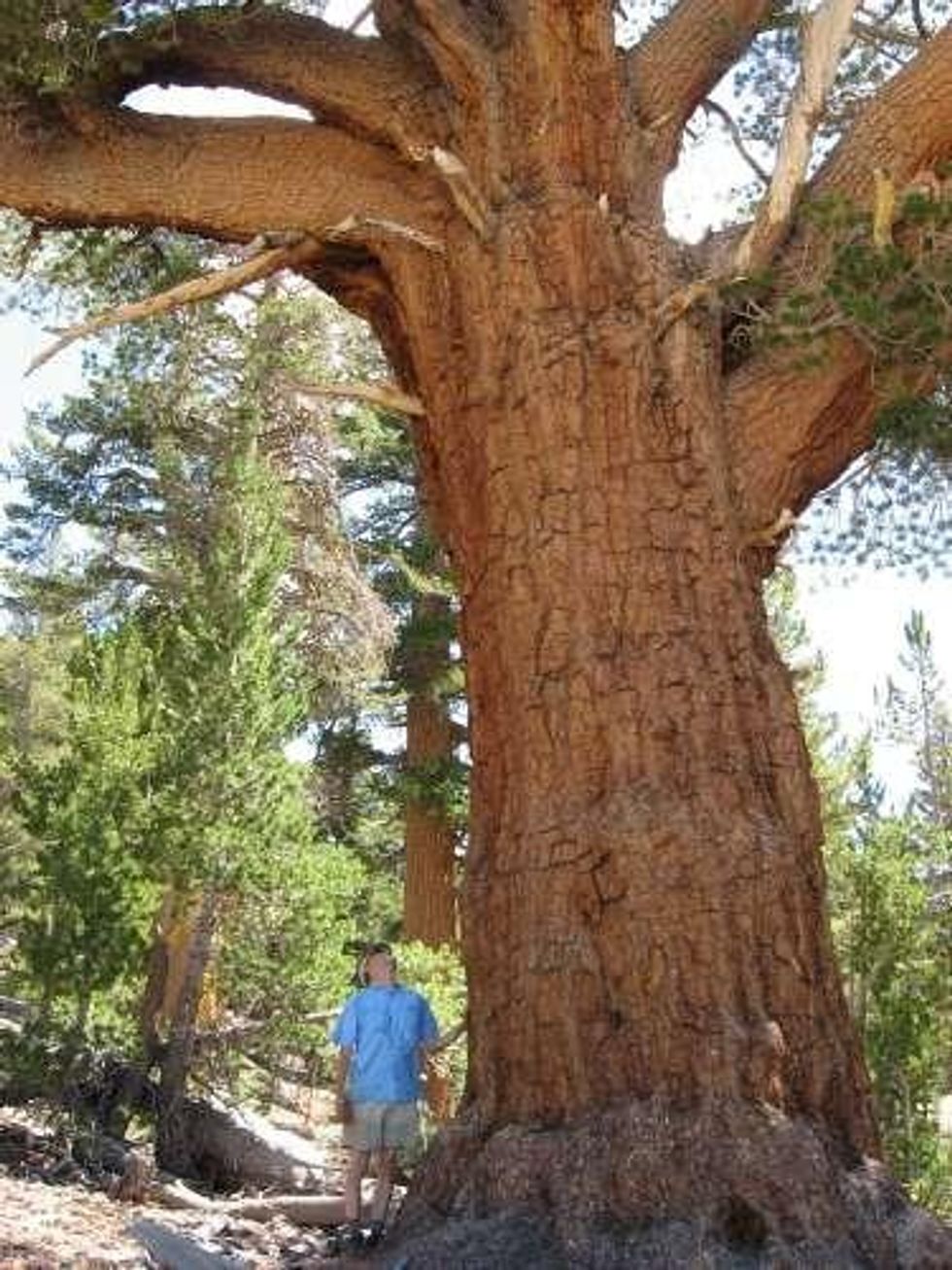Jan 20, 2014
Large, old trees are better at "sequestering" carbon than previously thought, in some cases absorbing as much CO2 as is in a smaller tree each year, according to a study published last week in the journal Nature.

"It also means that big, old trees are better at absorbing carbon from the atmosphere than has been commonly assumed," Stephenson said, and they play an important role in mitigating human-caused CO2 emissions.
The researchers studied the growth rate measurements of over 670,000 representing over 400 tree species across six continents.
While the old trees do release carbon back into the atmosphere when they die, the "findings do suggest that while they are alive, large old trees play a disproportionately important role within a forest's carbon dynamics. It is as if the star players on your favorite sports team were a bunch of 90-year-olds," added study co-author Adrian Das, also with the USGS.
_____________________
Join Us: News for people demanding a better world
Common Dreams is powered by optimists who believe in the power of informed and engaged citizens to ignite and enact change to make the world a better place. We're hundreds of thousands strong, but every single supporter makes the difference. Your contribution supports this bold media model—free, independent, and dedicated to reporting the facts every day. Stand with us in the fight for economic equality, social justice, human rights, and a more sustainable future. As a people-powered nonprofit news outlet, we cover the issues the corporate media never will. Join with us today! |
Our work is licensed under Creative Commons (CC BY-NC-ND 3.0). Feel free to republish and share widely.
Large, old trees are better at "sequestering" carbon than previously thought, in some cases absorbing as much CO2 as is in a smaller tree each year, according to a study published last week in the journal Nature.

"It also means that big, old trees are better at absorbing carbon from the atmosphere than has been commonly assumed," Stephenson said, and they play an important role in mitigating human-caused CO2 emissions.
The researchers studied the growth rate measurements of over 670,000 representing over 400 tree species across six continents.
While the old trees do release carbon back into the atmosphere when they die, the "findings do suggest that while they are alive, large old trees play a disproportionately important role within a forest's carbon dynamics. It is as if the star players on your favorite sports team were a bunch of 90-year-olds," added study co-author Adrian Das, also with the USGS.
_____________________
Large, old trees are better at "sequestering" carbon than previously thought, in some cases absorbing as much CO2 as is in a smaller tree each year, according to a study published last week in the journal Nature.

"It also means that big, old trees are better at absorbing carbon from the atmosphere than has been commonly assumed," Stephenson said, and they play an important role in mitigating human-caused CO2 emissions.
The researchers studied the growth rate measurements of over 670,000 representing over 400 tree species across six continents.
While the old trees do release carbon back into the atmosphere when they die, the "findings do suggest that while they are alive, large old trees play a disproportionately important role within a forest's carbon dynamics. It is as if the star players on your favorite sports team were a bunch of 90-year-olds," added study co-author Adrian Das, also with the USGS.
_____________________
We've had enough. The 1% own and operate the corporate media. They are doing everything they can to defend the status quo, squash dissent and protect the wealthy and the powerful. The Common Dreams media model is different. We cover the news that matters to the 99%. Our mission? To inform. To inspire. To ignite change for the common good. How? Nonprofit. Independent. Reader-supported. Free to read. Free to republish. Free to share. With no advertising. No paywalls. No selling of your data. Thousands of small donations fund our newsroom and allow us to continue publishing. Can you chip in? We can't do it without you. Thank you.